ASTANA — Kazakhstan celebrates the 100th anniversary of Nagimbek Nurmukhamedov, a distinguished figure in Soviet and Kazakh visual arts, with a series of events dedicated to his life and work.
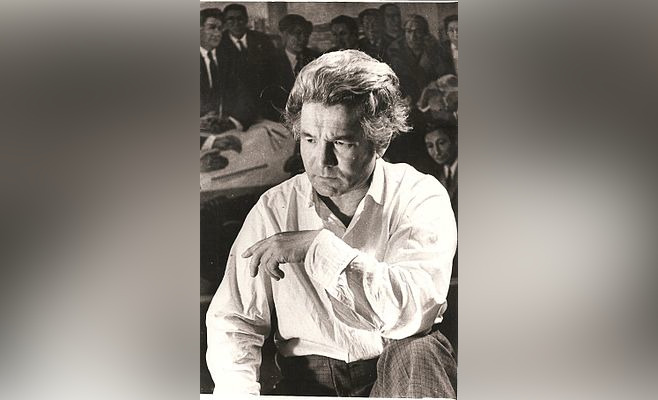
Nagimbek Nurmukhamedov. Photo credit: Archival photo.
Early years and works
Born in 1924 in the Bayanaul district of Pavlodar Region, Nurmukhamedov faced a difficult childhood. Losing his father at the age of seven, he was raised in children’s homes. Yet these early hardships shaped his resilience and artistic spirit.
He began his studies at the Almaty Theater and Art School in 1940 but put his education on hold to volunteer for the Soviet Army after his brother’s death during World War II. He served bravely in the Battle for the Caucasus, an experience that deeply influenced his artistic perspective.
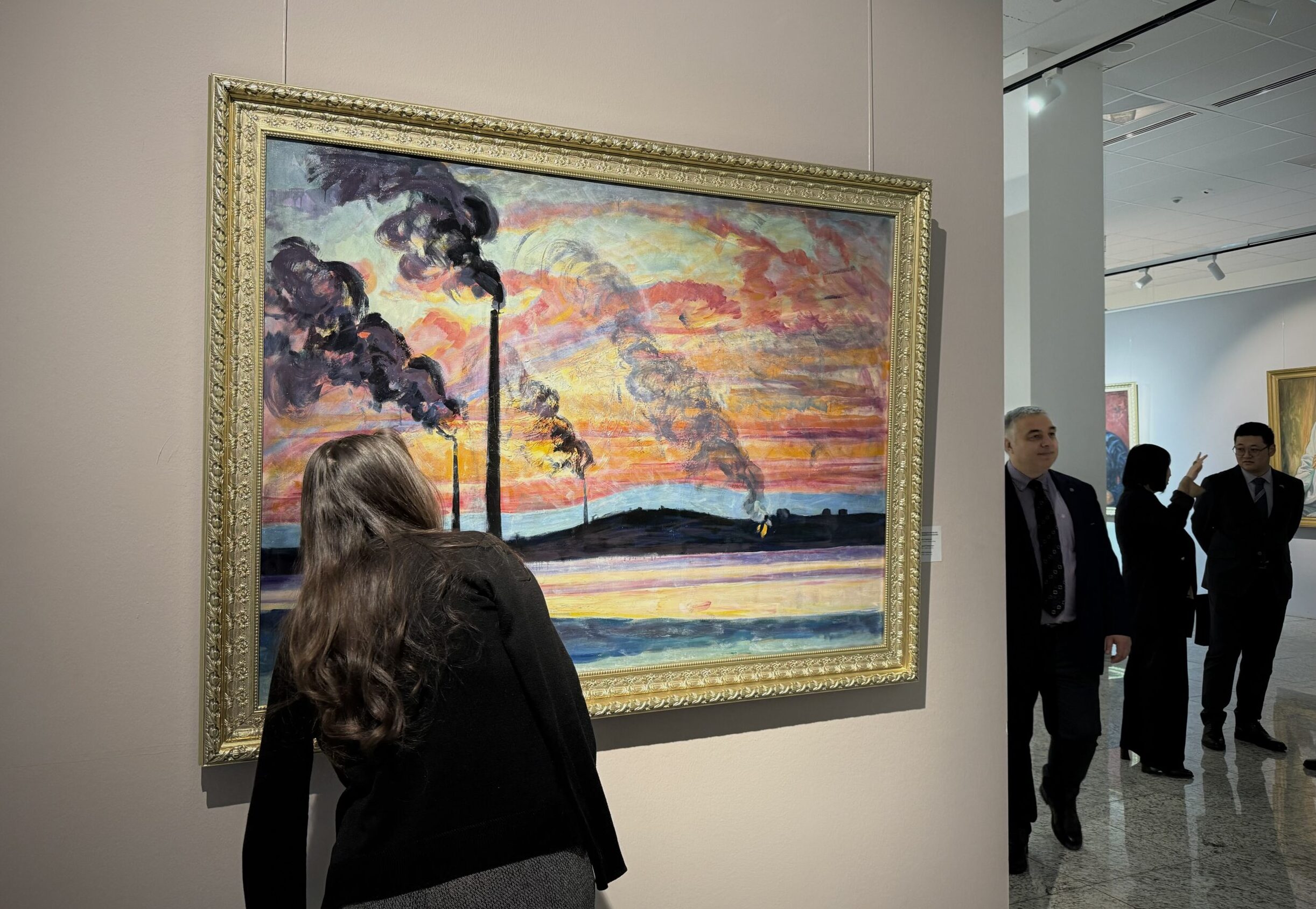
“Old Temirtau,” work in a series of “Kazakh Magnitka” (1959–1963) presented at the National Museum of Kazakhstan in Astana. Photo credit: Aruzhan Ualikhanova/The Astana Times.
After the war, Nurmukhamedov resumed his studies in Leningrad (now St. Petersburg) at the prestigious Repin Institute of Painting, Sculpture, and Architecture. Under the guidance of renowned professor Rudolf Frentz, he mastered battle and narrative painting. His works from this period reflect a rare blend of realism and modernist techniques, capturing the human spirit against the backdrop of rapid societal transformation.
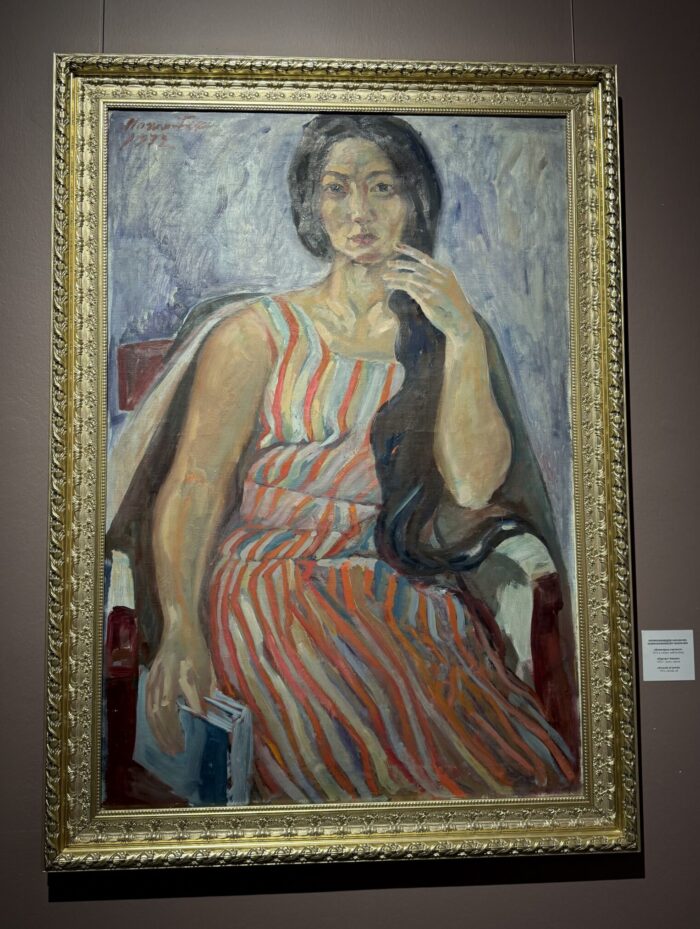
“Portrait of Jamal” (1972). Photo credit: Aruzhan Ualikhanoava/The Astana Times.
Nurmukhamedov’s early masterpiece series, “Kazakh Magnitka” (1959–1963), vividly illustrates the industrialization of Kazakhstan. Inspired by his visits to Temirtau, an emerging industrial hub, these paintings convey the energy and optimism of a nation in flux. Through shimmering blues and intricate light effects, he portrayed the monumental interplay of nature and industry, highlighting the transformative power of progress. The continuation of the “Kazakh Magnitka” theme was the theme of the Virgin Lands, a campaign to boost the Soviet Union’s agricultural production in 1954-1965 that mainly targeted Kazakh steppes.
Portraiture was another arena where Nurmukhamedov excelled. His “Portrait of Zhamal” (1972), celebrated for its elegance and emotional depth, captures the natural beauty of a Kazakh woman with a simplicity of color on canvas. Painter also created portraits of prominent figures in Kazakh history such as commander and World War II national hero Baurzhan Momyshuly, philologist and writer Malik Gabdullin, artist Abilkhan Kasteev and others.

“Extended Session of the Academy of Sciences of the Kazakh SSR,” one of the largest canvases created by the artist. Photo credit: Pavlodar Regional Museum of Arts named after N.Nurmikhamedov.
Similarly, his grand-scale historical painting, “Extended Session of the Academy of Sciences of the Kazakh SSR,” commemorates Kazakhstan’s intellectual elite. Featuring over 26 detailed figures, including scientists and himself as an observer, the piece evokes Renaissance traditions in its complexity and composition.
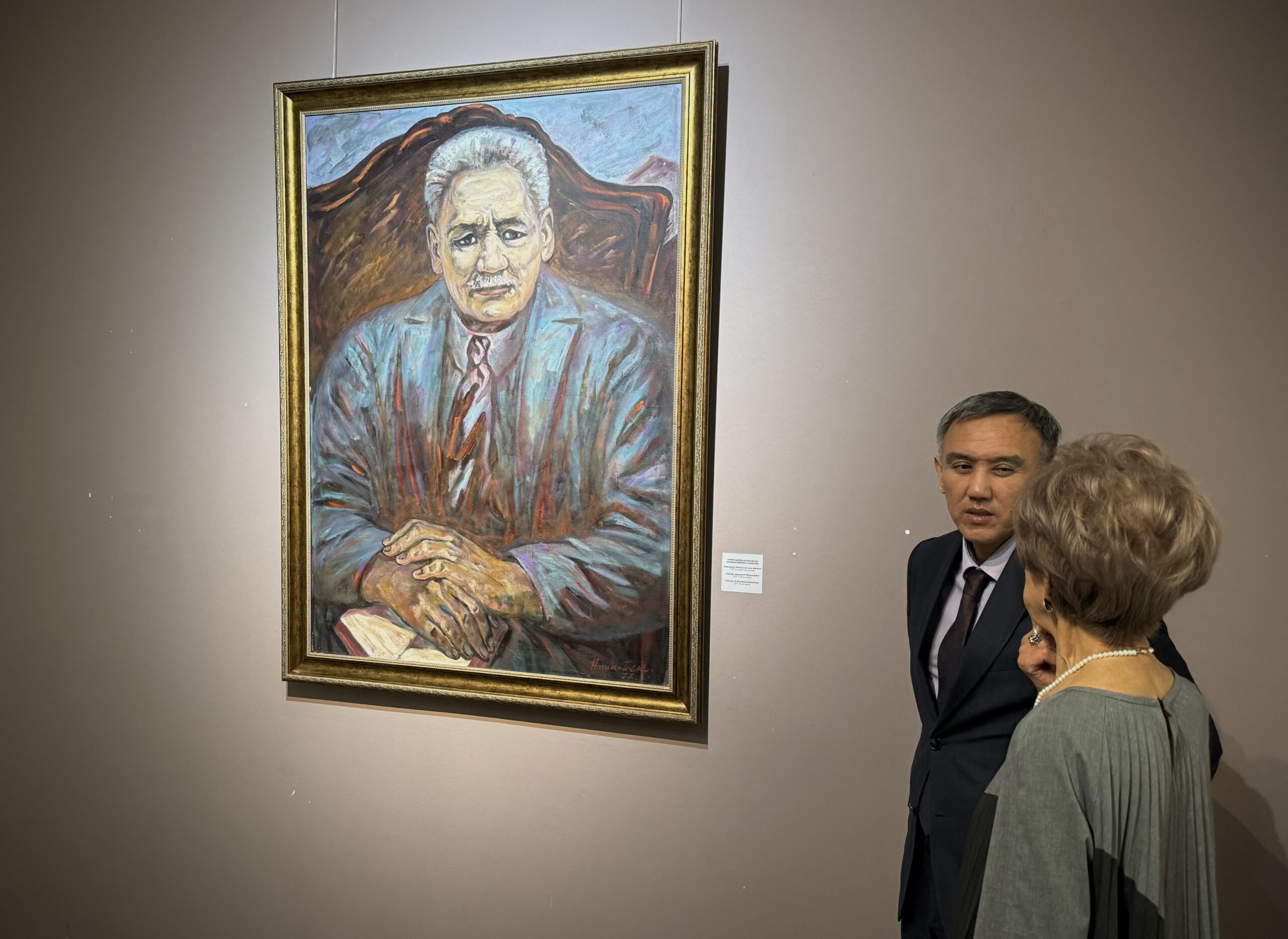
Portrait of Baurzhan Momyshuly. Photo credit: Aruzhan Ualikhanova/The Astana Times.
Nurmukhamedov was also an avid traveler, visiting Brazil, France, Japan and other countries, where he created vibrant sketches and paintings of local life. These works expanded his artistic vocabulary and were showcased at international exhibitions in Canada, Belgium and Yugoslavia, earning him recognition as an ambassador of Kazakh art.
Nurmukhamedov’s scholarly pursuits further distinguished him. A candidate of art history, he authored articles and books on Kazakh cultural heritage, including a comprehensive study of the Mausoleum of Khoja Ahmed Yasawi in Turkestan. His dual contributions as an artist and scholar solidified his status as a pivotal figure in Kazakh fine arts.
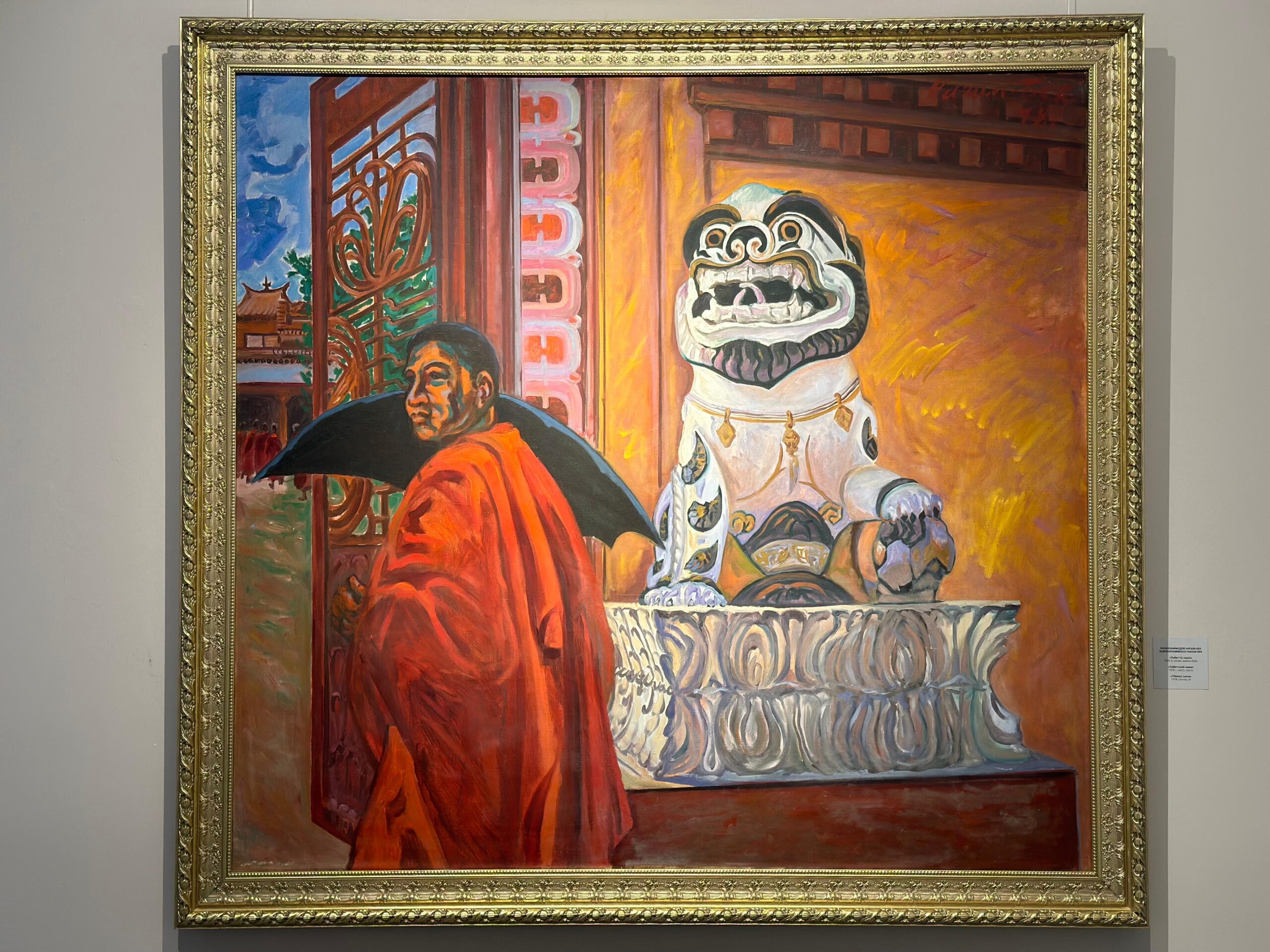
“Tibetan Lama”(1978). Photo credit: Aruzhan Ualikhanova.
Celebrating 100th anniversary
In honor of his centennial, the National Museum of Kazakhstan in Astana has opened an exhibition titled “Image of the Epoch in the Palette of Nagimbek Nurmukhamedov” on Nov. 12. Featuring over 50 works from leading museum collections of Kazakhstan, the exhibition is divided into two sections: “Landscapes of the Native Land” and “Labor and Honor: Portraits of Workers.”
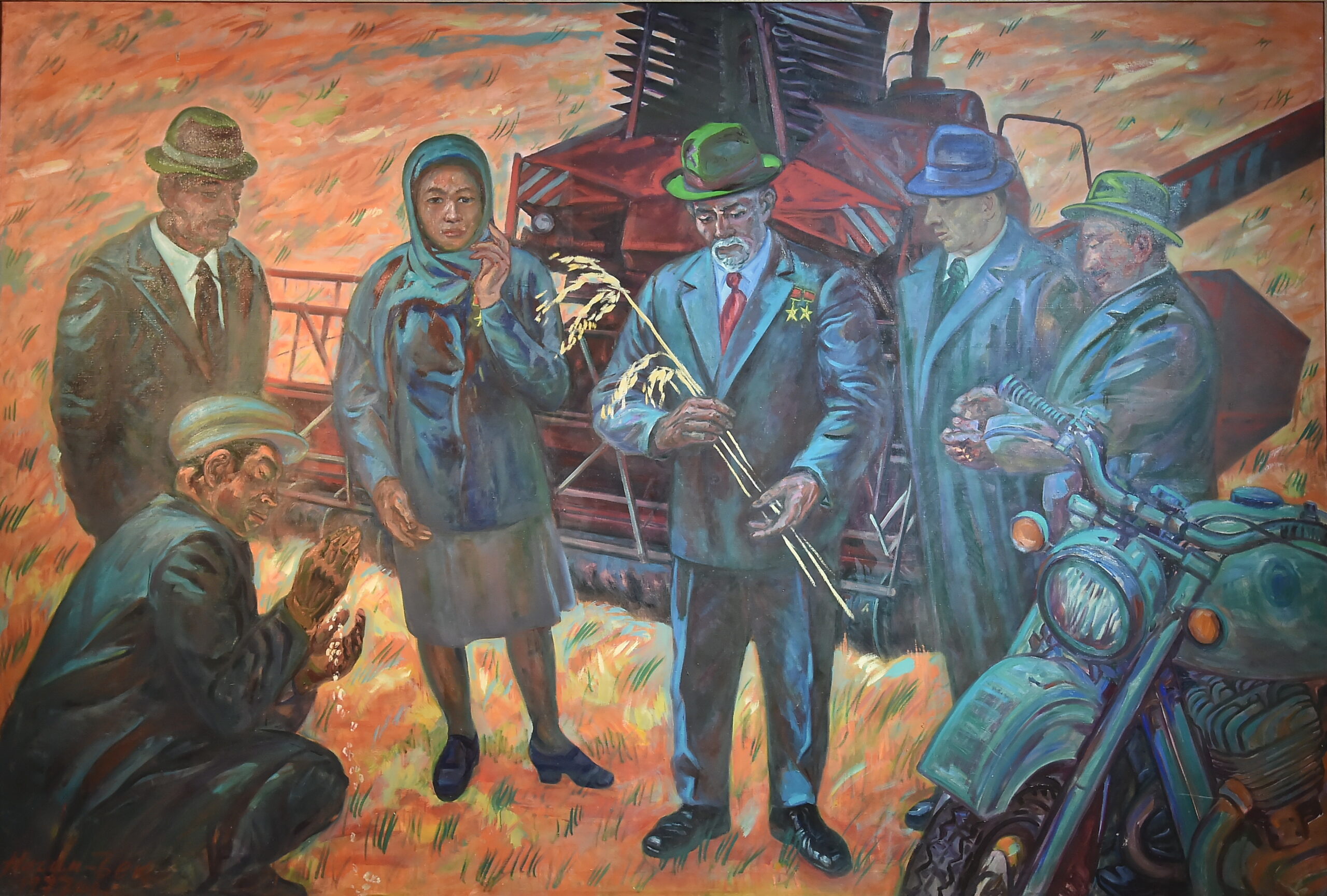
One of the famous works of Nurmukhamedov “Brigade of I.Zhakaev”. Photo credit: Aruzhan Ualikhanova/The Astana Times.
Speaking at the exhibition’s opening, his daughter, Mara Nurmukhamedova, reflected on his legacy.
“He was a deeply versatile individual who poured his soul into large-scale, multi-figure compositions. His themes ranged widely, from harvests and workers to sailors and soldiers. Despite his short life, he accomplished so much, always finding time to create even during difficult times,” shared Nurmukhamedova.

Exhibition in honor of the 100th anniversary at Abilkhan Kasteev State Museum of Arts in Almaty. Photo credit: Abilkhan Kasteev State Museum of Arts’ press service.
The main museum of Almaty, Abilkhan Kasteev State Museum of Arts, also opened an exhibition in honor of the 100th anniversary titled “Artist and Scholar. Images of the Era.”
The Pavlodar Regional Art Museum, renamed in his honor in 2022, has also played a central role in celebrating his centenary. Its current exhibition includes 30 of his paintings, offering visitors a glimpse into the artist’s diverse body of work, from intimate depictions of rural life to sweeping historical narratives.
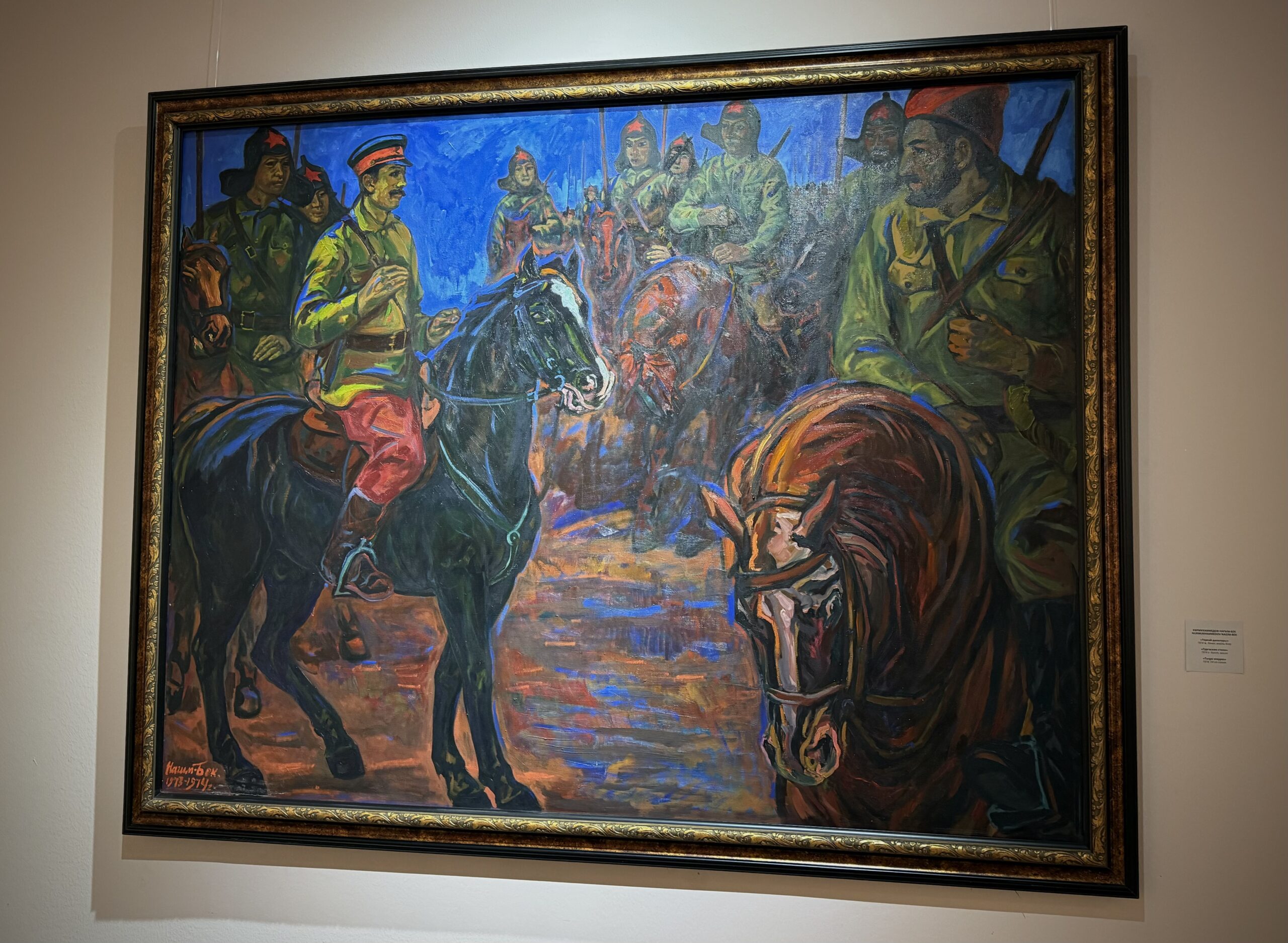
“Torgai steppes.” Photo credit: Aruzhan Ualikhanova/The Astana Times.
Nagimbek Nurmukhamedov’s art is more than a collection of beautiful images; it is a chronicle of an era, capturing the struggles and triumphs of a nation in transition. His unique ability to combine realism with innovative techniques ensures his place among the greats of Soviet and Kazakh art.


